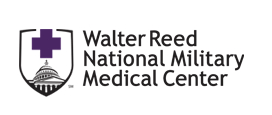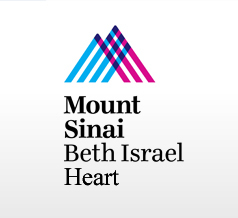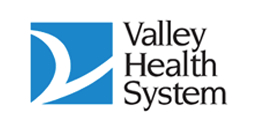International Study of Comparative Health Effectiveness With Medical and Invasive Approaches (ISCHEMIA)
| Status: | Active, not recruiting |
|---|---|
| Conditions: | Angina, Peripheral Vascular Disease, Cardiology |
| Therapuetic Areas: | Cardiology / Vascular Diseases |
| Healthy: | No |
| Age Range: | 21 - Any |
| Updated: | 4/17/2018 |
| Start Date: | July 2012 |
| End Date: | December 2019 |
The purpose of the ISCHEMIA trial is to determine the best management strategy for
higher-risk patients with stable ischemic heart disease (SIHD). This is a multicenter
randomized controlled trial with 5179 randomized participants with moderate or severe
ischemia on stress testing. A blinded coronary computed tomography angiogram (CCTA) was
performed in most participants with eGFR ≥60 mL/min/1.73m2 to identify and exclude
participants with either significant unprotected left main disease (≥50% stenosis) or those
without obstructive CAD (<50% stenosis in all major coronary arteries). Of 8720 participants
enrolled, those that had insufficient ischemia, ineligible anatomy demonstrated on CCTA or
another exclusion criterion, did not go on to randomization. Eligible participants were then
assigned at random to a routine invasive strategy (INV) with cardiac catheterization followed
by revascularization plus optimal medical therapy (OMT) or to a conservative strategy (CON)
of OMT, with cardiac catheterization and revascularization reserved for those who fail OMT.
SPECIFIC AIMS
A. Primary Aim The primary aim of the ISCHEMIA trial is to determine whether an initial
invasive strategy of cardiac catheterization followed by optimal revascularization, if
feasible, in addition to OMT, will reduce the primary composite endpoint of cardiovascular
death, nonfatal myocardial infarction, resuscitated cardiac arrest, or hospitalization for
unstable angina or heart failure in participants with SIHD and moderate or severe ischemia
over an average follow-up of approximately 3.5 years compared with an initial conservative
strategy of OMT alone with catheterization reserved for failure of OMT.
B. Secondary Aims Secondary aims are to determine whether an initial invasive strategy
compared to a conservative strategy will improve: 1) the composite of CV death or MI; 2)
angina symptoms and quality of life, as assessed by the Seattle Angina Questionnaire Angina
Frequency and Quality of Life scales; 3) all-cause mortality; 4) net clinical benefit
assessed by including stroke in the primary and secondary composite endpoints; and 5)
individual components of the composite endpoints.
Condition: Coronary Disease Procedure: Coronary CT Angiogram Procedure: Cardiac
catheterization Phase: Phase III
Condition: Cardiovascular Diseases Procedure: Angioplasty, Transluminal, Percutaneous
Coronary, other catheter-based interventions Phase: Phase III
Condition: Heart Diseases Procedure: Coronary Artery Bypass Surgery Phase: Phase III
higher-risk patients with stable ischemic heart disease (SIHD). This is a multicenter
randomized controlled trial with 5179 randomized participants with moderate or severe
ischemia on stress testing. A blinded coronary computed tomography angiogram (CCTA) was
performed in most participants with eGFR ≥60 mL/min/1.73m2 to identify and exclude
participants with either significant unprotected left main disease (≥50% stenosis) or those
without obstructive CAD (<50% stenosis in all major coronary arteries). Of 8720 participants
enrolled, those that had insufficient ischemia, ineligible anatomy demonstrated on CCTA or
another exclusion criterion, did not go on to randomization. Eligible participants were then
assigned at random to a routine invasive strategy (INV) with cardiac catheterization followed
by revascularization plus optimal medical therapy (OMT) or to a conservative strategy (CON)
of OMT, with cardiac catheterization and revascularization reserved for those who fail OMT.
SPECIFIC AIMS
A. Primary Aim The primary aim of the ISCHEMIA trial is to determine whether an initial
invasive strategy of cardiac catheterization followed by optimal revascularization, if
feasible, in addition to OMT, will reduce the primary composite endpoint of cardiovascular
death, nonfatal myocardial infarction, resuscitated cardiac arrest, or hospitalization for
unstable angina or heart failure in participants with SIHD and moderate or severe ischemia
over an average follow-up of approximately 3.5 years compared with an initial conservative
strategy of OMT alone with catheterization reserved for failure of OMT.
B. Secondary Aims Secondary aims are to determine whether an initial invasive strategy
compared to a conservative strategy will improve: 1) the composite of CV death or MI; 2)
angina symptoms and quality of life, as assessed by the Seattle Angina Questionnaire Angina
Frequency and Quality of Life scales; 3) all-cause mortality; 4) net clinical benefit
assessed by including stroke in the primary and secondary composite endpoints; and 5)
individual components of the composite endpoints.
Condition: Coronary Disease Procedure: Coronary CT Angiogram Procedure: Cardiac
catheterization Phase: Phase III
Condition: Cardiovascular Diseases Procedure: Angioplasty, Transluminal, Percutaneous
Coronary, other catheter-based interventions Phase: Phase III
Condition: Heart Diseases Procedure: Coronary Artery Bypass Surgery Phase: Phase III
BACKGROUND:
Evidence supporting a routine invasive practice paradigm for patients with SIHD is outdated.
In strategy trials conducted in the 1970s, coronary artery bypass grafting (CABG) improved
survival as compared with no CABG in SIHD patients with high-risk anatomic features. The
relevance of these studies today is speculative because contemporary secondary
prevention—aspirin, beta-blockers, statins, ACE inhibitors, and lifestyle interventions—were
used minimally if at all. Subsequent trials have compared percutaneous coronary intervention
(PCI) with medical therapy, as PCI has replaced CABG as the dominant method of
revascularization for SIHD. To date, PCI has not been shown to reduce death or myocardial
infarction (MI) compared with medical therapy in SIHD patients.
COURAGE and BARI 2D, the two largest trials comparing coronary revascularization vs. medical
therapy in SIHD patients, found that among patients selected on the basis of coronary anatomy
after cardiac catheterization, an initial management strategy of coronary revascularization
(PCI, PCI or CABG, respectively) did not reduce the primary endpoints of death or MI
(COURAGE), or death (BARI 2D) compared with OMT alone. These data suggest, but do not prove,
that routine cardiac catheterization--which often leads to ad hoc PCI through the
diagnostic-therapeutic cascade--may not be required in SIHD patients. However, most patients
enrolled in COURAGE and BARI 2D who had ischemia level documented at baseline had only mild
or moderate ischemia, leaving open the question of the appropriate role of cardiac
catheterization and revascularization among higher risk patients with more severe ischemia.
Observational data suggest that revascularization of patients with moderate-to-severe
ischemia is associated with a lower mortality than medical therapy alone, but such data
cannot establish a cause and effect relationship. In clinical practice only about half such
patients are referred for cardiac catheterization, indicating equipoise. Furthermore,
analysis of outcomes for 468 COURAGE patients with moderate-to-severe ischemia at baseline
did not reveal a benefit from PCI. This issue cannot be resolved using available data because
all prior SIHD strategy trials enrolled patients after cardiac catheterization, introducing
undefined selection biases (e.g., highest risk patients not enrolled) and making translation
of study results problematic for clinicians managing patients who have not yet had cardiac
catheterization.
A clinical trial in SIHD patients uniformly at higher risk (which could not have been
performed before COURAGE and BARI 2D results were available) is needed to inform optimal
management for such patients.
DESIGN NARRATIVE:
Study protocol version 1.0 was finalized on January 18, 2012. That protocol stated:
"To ensure that the primary analysis is well-powered and useful, a prospective plan to allow
extending follow-up and/or changing the primary endpoint based on aggregate event rate data
will be established prior to the first review of unblinded trial data. At a designated time
during the trial, an analysis will be conducted to estimate the overall aggregate primary
endpoint event rate and project the final number of observed events. If the estimated
unconditional power (i.e. based on aggregate event rate data; not by treatment group) is less
than the originally targeted 90%, then one or more of the following options will be
considered:
1. Extend follow-up to allow more events to accrue.
2. Change the primary endpoint to one that occurs more frequently. The current primary
endpoint would become a secondary endpoint. The proposed new primary endpoint would be
the composite of CV death, MI, resuscitated cardiac arrest, or hospitalization for
unstable angina or heart failure.
3. Follow the recommendation of an independent advisory panel. An independent advisory
panel, separate from the DSMB, will be convened for the purpose of reviewing
unconditional power estimates and making a recommendation to the NHLBI Director. Members
of this panel will not have access to unblinded data by treatment group or other data
that may bias their recommendation." All 5 event types were, and continue to be,
adjudicated throughout the trial. Study protocol v2.0 (January 2014) allowed ischemia
eligibility by non-imaging exercise stress test if more stringent (≥70% stenosis) CCTA
criteria were met. The 2016 protocol addendum describes the NHLBI-approved reduction in
sample size and extension of recruitment and follow-up due to slower than projected
recruitment.
The pre-specified first analysis for monitoring and projecting the final aggregate number of
primary endpoint events was conducted in 2015. In 2016, the projected need to increase the
power by extending follow-up and elevating the 5-component secondary endpoint to become
primary was discussed at Steering Committee and Investigator meetings and communicated by
email.
An Independent Advisory Panel convened by NHLBI met in May 2017, and in June 2017 NHLBI
approved the Independent Advisory Panel's recommendation to elevate the 5-component secondary
endpoint to become primary and retain the 2-component composite as a key secondary endpoint.
The panel also recommended extension of follow-up. The last visit date is now projected to be
June 2019. This was communicated to the Steering Committee and Investigators at August and
November 2017 meetings and by email.
A statistical plan developed for the Independent Advisory Panel process in 2012 specified
that a decision about changing the primary endpoint would be targeted to occur before 75% of
the final number of primary endpoint events had accrued. Although the final number of primary
endpoint events was unknown during the course of the trial, estimates performed at the time
of the Advisory Panel meeting suggested that the ratio of accrued endpoint events to final
endpoint events was below 50%.
PARTICIPATING COUNTRIES:
North America:
Canada; Mexico; USA (106 sites)
South America:
Argentina; Brazil; Peru
Asia:
China; India; Japan; Malaysia; Singapore; Taiwan; Thailand; Russian Federation
Pacifica:
Australia; New Zealand
Europe:
Austria; Belgium; France; Germany; Hungary; Italy; Lithuania; Macedonia; Netherlands; Poland;
Portugal; Romania; Serbia; Spain; Sweden; Switzerland; UK
Middle East:
Egypt; Israel; Saudi Arabia
Africa:
South Africa
Evidence supporting a routine invasive practice paradigm for patients with SIHD is outdated.
In strategy trials conducted in the 1970s, coronary artery bypass grafting (CABG) improved
survival as compared with no CABG in SIHD patients with high-risk anatomic features. The
relevance of these studies today is speculative because contemporary secondary
prevention—aspirin, beta-blockers, statins, ACE inhibitors, and lifestyle interventions—were
used minimally if at all. Subsequent trials have compared percutaneous coronary intervention
(PCI) with medical therapy, as PCI has replaced CABG as the dominant method of
revascularization for SIHD. To date, PCI has not been shown to reduce death or myocardial
infarction (MI) compared with medical therapy in SIHD patients.
COURAGE and BARI 2D, the two largest trials comparing coronary revascularization vs. medical
therapy in SIHD patients, found that among patients selected on the basis of coronary anatomy
after cardiac catheterization, an initial management strategy of coronary revascularization
(PCI, PCI or CABG, respectively) did not reduce the primary endpoints of death or MI
(COURAGE), or death (BARI 2D) compared with OMT alone. These data suggest, but do not prove,
that routine cardiac catheterization--which often leads to ad hoc PCI through the
diagnostic-therapeutic cascade--may not be required in SIHD patients. However, most patients
enrolled in COURAGE and BARI 2D who had ischemia level documented at baseline had only mild
or moderate ischemia, leaving open the question of the appropriate role of cardiac
catheterization and revascularization among higher risk patients with more severe ischemia.
Observational data suggest that revascularization of patients with moderate-to-severe
ischemia is associated with a lower mortality than medical therapy alone, but such data
cannot establish a cause and effect relationship. In clinical practice only about half such
patients are referred for cardiac catheterization, indicating equipoise. Furthermore,
analysis of outcomes for 468 COURAGE patients with moderate-to-severe ischemia at baseline
did not reveal a benefit from PCI. This issue cannot be resolved using available data because
all prior SIHD strategy trials enrolled patients after cardiac catheterization, introducing
undefined selection biases (e.g., highest risk patients not enrolled) and making translation
of study results problematic for clinicians managing patients who have not yet had cardiac
catheterization.
A clinical trial in SIHD patients uniformly at higher risk (which could not have been
performed before COURAGE and BARI 2D results were available) is needed to inform optimal
management for such patients.
DESIGN NARRATIVE:
Study protocol version 1.0 was finalized on January 18, 2012. That protocol stated:
"To ensure that the primary analysis is well-powered and useful, a prospective plan to allow
extending follow-up and/or changing the primary endpoint based on aggregate event rate data
will be established prior to the first review of unblinded trial data. At a designated time
during the trial, an analysis will be conducted to estimate the overall aggregate primary
endpoint event rate and project the final number of observed events. If the estimated
unconditional power (i.e. based on aggregate event rate data; not by treatment group) is less
than the originally targeted 90%, then one or more of the following options will be
considered:
1. Extend follow-up to allow more events to accrue.
2. Change the primary endpoint to one that occurs more frequently. The current primary
endpoint would become a secondary endpoint. The proposed new primary endpoint would be
the composite of CV death, MI, resuscitated cardiac arrest, or hospitalization for
unstable angina or heart failure.
3. Follow the recommendation of an independent advisory panel. An independent advisory
panel, separate from the DSMB, will be convened for the purpose of reviewing
unconditional power estimates and making a recommendation to the NHLBI Director. Members
of this panel will not have access to unblinded data by treatment group or other data
that may bias their recommendation." All 5 event types were, and continue to be,
adjudicated throughout the trial. Study protocol v2.0 (January 2014) allowed ischemia
eligibility by non-imaging exercise stress test if more stringent (≥70% stenosis) CCTA
criteria were met. The 2016 protocol addendum describes the NHLBI-approved reduction in
sample size and extension of recruitment and follow-up due to slower than projected
recruitment.
The pre-specified first analysis for monitoring and projecting the final aggregate number of
primary endpoint events was conducted in 2015. In 2016, the projected need to increase the
power by extending follow-up and elevating the 5-component secondary endpoint to become
primary was discussed at Steering Committee and Investigator meetings and communicated by
email.
An Independent Advisory Panel convened by NHLBI met in May 2017, and in June 2017 NHLBI
approved the Independent Advisory Panel's recommendation to elevate the 5-component secondary
endpoint to become primary and retain the 2-component composite as a key secondary endpoint.
The panel also recommended extension of follow-up. The last visit date is now projected to be
June 2019. This was communicated to the Steering Committee and Investigators at August and
November 2017 meetings and by email.
A statistical plan developed for the Independent Advisory Panel process in 2012 specified
that a decision about changing the primary endpoint would be targeted to occur before 75% of
the final number of primary endpoint events had accrued. Although the final number of primary
endpoint events was unknown during the course of the trial, estimates performed at the time
of the Advisory Panel meeting suggested that the ratio of accrued endpoint events to final
endpoint events was below 50%.
PARTICIPATING COUNTRIES:
North America:
Canada; Mexico; USA (106 sites)
South America:
Argentina; Brazil; Peru
Asia:
China; India; Japan; Malaysia; Singapore; Taiwan; Thailand; Russian Federation
Pacifica:
Australia; New Zealand
Europe:
Austria; Belgium; France; Germany; Hungary; Italy; Lithuania; Macedonia; Netherlands; Poland;
Portugal; Romania; Serbia; Spain; Sweden; Switzerland; UK
Middle East:
Egypt; Israel; Saudi Arabia
Africa:
South Africa
Inclusion Criteria:
- At least moderate ischemia on an ischemia test
- Participant is willing to comply with all aspects of the protocol, including adherence
to the assigned strategy, medical therapy and follow-up visits
- Participant is willing to give written informed consent
- Age ≥ 21 years
Exclusion Criteria:
- LVEF < 35%
- History of unprotected left main stenosis >50% on prior coronary computed tomography
angiography (CCTA) or prior cardiac catheterization (if available)
- Finding of "no obstructive CAD" (<50% stenosis in all major epicardial vessels) on
prior CCTA or prior catheterization, performed within 12 months
- Coronary anatomy unsuitable for either PCI or CABG
- Unacceptable level of angina despite maximal medical therapy
- Very dissatisfied with medical management of angina
- History of noncompliance with medical therapy
- Acute coronary syndrome within the previous 2 months
- PCI within the previous 12 months
- Stroke within the previous 6 months or spontaneous intracranial hemorrhage at any time
- History of ventricular tachycardia requiring therapy for termination, or symptomatic
sustained ventricular tachycardia not due to a transient reversible cause
- NYHA class III-IV heart failure at entry or hospitalization for exacerbation of
chronic heart failure within the previous 6 months
- Non-ischemic dilated or hypertrophic cardiomyopathy
- End stage renal disease on dialysis or estimated glomerular filtration rate (eGFR)
<30mL/min (not an exclusion criterion for CKD ancillary trial, see CKD ancillary
trial, Section 18)
- Severe valvular disease or valvular disease likely to require surgery or percutaneous
valve replacement during the trial
- Allergy to radiographic contrast that cannot be adequately pre-medicated, or any prior
anaphylaxis to radiographic contrast
- Planned major surgery necessitating interruption of dual antiplatelet therapy (note
that patients may be eligible after planned surgery)
- Life expectancy less than the duration of the trial due to non-cardiovascular
comorbidity
- Pregnancy (known to be pregnant; to be confirmed before CCTA and/or randomization, if
applicable)
- Patient who, in the judgment of the patient's physician, is likely to have significant
unprotected left main stenosis (Those who are able to undergo CCTA will have visual
assessment of the left main coronary artery by the CCTA core lab)
- Enrolled in a competing trial that involves a non-approved cardiac drug or device
- Inability to comply with the protocol
- Exceeds the weight or size limit for CCTA or cardiac catheterization at the site
- Canadian Cardiovascular Society Class III angina of recent onset, OR angina of any
class with a rapidly progressive or accelerating pattern
- Canadian Cardiovascular Society Class IV angina, including unprovoked rest angina
- High risk of bleeding which would contraindicate the use of dual antiplatelet therapy
- Cardiac transplant recipient
- Prior CABG, unless CABG was performed more than 12 months ago, and coronary anatomy
has been demonstrated to be suitable for PCI or repeat CABG to accomplish complete
revascularization of ischemic areas (CCC approval required)
We found this trial at
120
sites
Albert Einstein Medical Center Einstein Healthcare Network is a private, not-for-profit organization with several major...
Click here to add this to my saved trials
Click here to add this to my saved trials
Emory University Emory University, recognized internationally for its outstanding liberal artscolleges, graduate and professional schools,...
Click here to add this to my saved trials
University of Alabama at Birmingham The University of Alabama at Birmingham (UAB) traces its roots...
Click here to add this to my saved trials
Brigham and Women's Hosp Boston’s Brigham and Women’s Hospital (BWH) is an international leader in...
Click here to add this to my saved trials
Baylor College of Medicine Baylor College of Medicine in Houston, the only private medical school...
Click here to add this to my saved trials
Mayo Clinic Mayo Clinic's campus in Arizona provides medical care for thousands of people from...
Click here to add this to my saved trials
University of Southern California The University of Southern California is one of the world’s leading...
Click here to add this to my saved trials
Univ of Minnesota With a flagship campus in the heart of the Twin Cities, and...
Click here to add this to my saved trials
1211 Medical Center Dr
Nashville, Tennessee 37232
Nashville, Tennessee 37232
(615) 322-5000

Vanderbilt Univ Med Ctr Vanderbilt University Medical Center (VUMC) is a comprehensive healthcare facility dedicated...
Click here to add this to my saved trials
Beth Israel Med Ctr The physicians and staff of Mount Sinai Beth Israel's Heart Institute...
Click here to add this to my saved trials
3181 Southwest Sam Jackson Park Road
Portland, Oregon 97239
Portland, Oregon 97239
503 494-8311

Oregon Health and Science University In 1887, the inaugural class of the University of Oregon...
Click here to add this to my saved trials
University of South Florida The University of South Florida is a high-impact, global research university...
Click here to add this to my saved trials
Click here to add this to my saved trials
Click here to add this to my saved trials
Click here to add this to my saved trials
5665 Peachtree Dunwoody Rd NE
Atlanta, Georgia 30342
Atlanta, Georgia 30342
(678) 843-7001

Saint Joseph's Hospital of Atlanta Founded by the Sisters of Mercy in 1880, Saint Joseph
Click here to add this to my saved trials
Click here to add this to my saved trials
Click here to add this to my saved trials
University of Maryland As a globally-connected university offering a world-class education, the University of Maryland...
Click here to add this to my saved trials
Click here to add this to my saved trials
Click here to add this to my saved trials
8901 Rockville Pike
Bethesda, Maryland 20889
Bethesda, Maryland 20889
(301) 295-4000

Walter Reed National Military Medical Center The Walter Reed National Military Medical Center is one...
Click here to add this to my saved trials
Click here to add this to my saved trials
Click here to add this to my saved trials
Click here to add this to my saved trials
Click here to add this to my saved trials
Jacobi Medical Center In 1955, the NYC Department of Hospitals opened a new, specialized care...
Click here to add this to my saved trials
Click here to add this to my saved trials
New York Methodist Hospital A voluntary, acute-care teaching hospital, New York Methodist Hospital's mission is...
Click here to add this to my saved trials
Click here to add this to my saved trials
Click here to add this to my saved trials
Click here to add this to my saved trials
Click here to add this to my saved trials
Click here to add this to my saved trials
Click here to add this to my saved trials
Grant Medical Center Founded in 1900 in Columbus' downtown, Grant has grown into one of...
Click here to add this to my saved trials
Click here to add this to my saved trials
Click here to add this to my saved trials
Click here to add this to my saved trials
Click here to add this to my saved trials
Click here to add this to my saved trials
Click here to add this to my saved trials
Click here to add this to my saved trials
Duke Univ Med Ctr As a world-class academic and health care system, Duke Medicine strives...
Click here to add this to my saved trials
Englewood Hospital and Medical Center Englewood Hospital was incorporated in 1888 as a non-profit, non-sectarian...
Click here to add this to my saved trials
Click here to add this to my saved trials
Click here to add this to my saved trials
Click here to add this to my saved trials
Click here to add this to my saved trials
Click here to add this to my saved trials
Click here to add this to my saved trials
Click here to add this to my saved trials
Click here to add this to my saved trials
Click here to add this to my saved trials
Click here to add this to my saved trials
Click here to add this to my saved trials
Click here to add this to my saved trials
Click here to add this to my saved trials
Click here to add this to my saved trials
Click here to add this to my saved trials
Click here to add this to my saved trials
Click here to add this to my saved trials
UCLA Medical Center Founded in 1955, UCLA Medical Center became Ronald Reagan UCLA Medical Center...
Click here to add this to my saved trials
University of Louisville The University of Louisville is a state supported research university located in...
Click here to add this to my saved trials
Click here to add this to my saved trials
Click here to add this to my saved trials
Click here to add this to my saved trials
Loyola University Medical Center Loyola University Health System is committed to excellence in patient care...
Click here to add this to my saved trials
Winthrop University Hospital Founded in 1896 by a group of local physicians and concerned citizens,...
Click here to add this to my saved trials
Click here to add this to my saved trials
Click here to add this to my saved trials
Click here to add this to my saved trials
Click here to add this to my saved trials
Click here to add this to my saved trials
Click here to add this to my saved trials
Click here to add this to my saved trials
550 1st Ave
New York, New York 10016
New York, New York 10016
(212) 263-7300

Principal Investigator: Harmony R Reynolds, MD
Phone: 212-263-4225
New York University School of Medicine NYU School of Medicine has a proud history that...
Click here to add this to my saved trials
Columbia University Medical Center Situated on a 20-acre campus in Northern Manhattan and accounting for...
Click here to add this to my saved trials
Click here to add this to my saved trials
Click here to add this to my saved trials
101 The City Drive South
Orange, California 92868
Orange, California 92868
714-456-7890

University of California, Irvine Medical Center We are UC Irvine Health. We are a devoted...
Click here to add this to my saved trials
Click here to add this to my saved trials
VA Palo Alto Health Care System The VA Palo Alto Health Care System (VAPAHCS) consists...
Click here to add this to my saved trials
Click here to add this to my saved trials
Click here to add this to my saved trials
Click here to add this to my saved trials
Click here to add this to my saved trials
Click here to add this to my saved trials
Click here to add this to my saved trials
Click here to add this to my saved trials
Miriam Hospital The Miriam Hospital is a private, not-for-profit hospital, with a history of providing...
Click here to add this to my saved trials
The Valley Hospital The Valley Hospital is a fully accredited, acute care, not-for-profit hospital serving...
Click here to add this to my saved trials
Click here to add this to my saved trials
Click here to add this to my saved trials
Click here to add this to my saved trials
Click here to add this to my saved trials
Click here to add this to my saved trials
Click here to add this to my saved trials
Click here to add this to my saved trials























